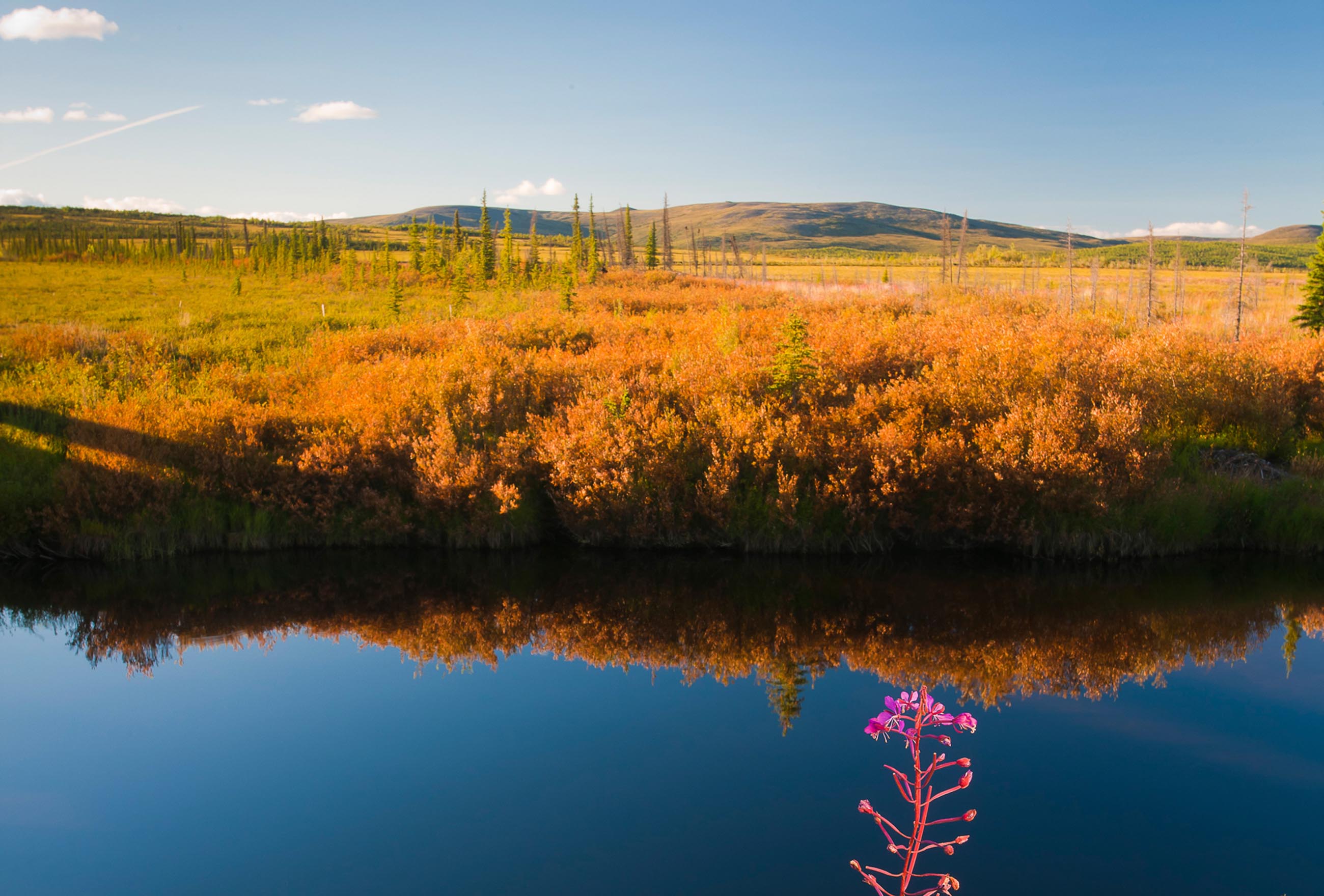Kanuti National Wildlife Refuge
With a pristine boreal ecosystem and protected wildlife, this refuge offers a remote wilderness experience.
Kanuti National Wildlife Refuge is a 1.6 million acre preserve south of Bettles that extends over the rolling forested plain of the Kanuti and Koyukuk Rivers. The Athabascan translation of Kanuti means "well traveled river by both man and animals.”
THINGS TO DO
Visiting Kanuti is a true wilderness experience in Alaska. The refuge, located in both Interior and Arctic Alaska, is slightly larger than the state of Delaware and totally absent of roads or visitor services. Visitors have opportunities for backcountry camping, fishing for grayling and northern pike, hunting, floating the area’s rivers, wildlife viewing, and photography.
Traveling by river is the most popular way to experience the refuge. The refuge can be accessed by plane or by several rivers that intersect the Dalton Highway including the Koyokuk River, Kanuti River, Jim River, and Bonanza Creek,
Backpackers can also explore the Kanuti on foot by staying on uplands or on river corridors where firm gravel bars can be found. The vast acres of wetlands, tussocks, and lakes make lowland hiking in the refuge difficult. The easiest way to see the refuge and get a sense of its size and remoteness is through a flightseeing tour.
Kanuti Hot Springs is located 12 miles west of the Dalton Highway. In the summer, visitors can access the hot springs by packrafting the Kanuti River from the Dalton Highway and then hiking the ridgeline back to the highway. In winter, the hot springs are accessible by cross-country skiing.
WILDLIFE
Kanuti is home to 130 species of birds, including four species of loons, 12 species of raptors, and 20 species of waterfowl. The refuge also provides space and isolation for moose, wolves, black and brown bears, and wolverines, while the Western Arctic caribou herd uses part of the refuge as its winter grounds. Seasonally, flooded streams and rivers are home to salmon, Arctic grayling, and whitefish.
LANDSCAPE
The refuge is a prime example of Alaska's boreal ecosystem, an area dominated by black and white spruce, with white birch and poplars interspersed by rivers, lakes, ponds, wetlands, and open spaces. The wetlands and open water provide nesting habitat for large populations of migratory waterfowl, including Alaska's greatest nesting density of white-fronted geese.
HISTORY
Along with 15 other refuges in Alaska, the Kanuti National Wildlife Refuge was established in 1980 with the passage of The Alaska National Interest Lands Conservation Act.
FACILITIES AND CAMPING
Kanuti National Wildlife Refuge is a remote, totally undeveloped refuge. There are no roads, villages, designated trails, campgrounds, or visitor facilities. Visitors must be well-equipped and totally self-sufficient and expect little or no human contact outside of the villages near the refuge.
The Arctic Interagency Visitor Center at Mile 175 of the Dalton Highway in Coldfoot provides information for visitors to Kanuti as well as Arctic National Wildlife Refuge, Yukon Flats National Wildlife Refuge, and Gates of the Arctic National Park and Preserve. The impressive center features exhibits about life in the Arctic, wilderness travel, and the circumpolar region, while dioramas depict the boreal forest, Brooks Range, and North Slope ecosystems. The Ranger Station and Visitor Center in Bettles also provides information on the refuge and Gates of the Arctic National Park and Preserve.
GETTING HERE
Most visitors arrive in the refuge from the community of Bettles. There is scheduled air service between Fairbanks and Bettles, and air charter operators are available for drop-offs at lakes, rivers, and gravel bars. Visitors can then access the remaining parts of the refuge on foot or by boat. In winter, the refuge can be reached from the Dalton Highway using non-motorized transportation such as skis or dog teams.
For more information, visit the Kanuti National Wildlife Refuge website.

Local Climate & Weather
For Alaska's day-to-day weather, it’s best to plan for a bit of everything. Learn more about weather in this area.
Travel Inspiration
#TravelAlaska
#TravelAlaska
 @ontheroadtogether.online
@ontheroadtogether.online
 @djtudino
@djtudino
 @alaskaphototreks
@alaskaphototreks

